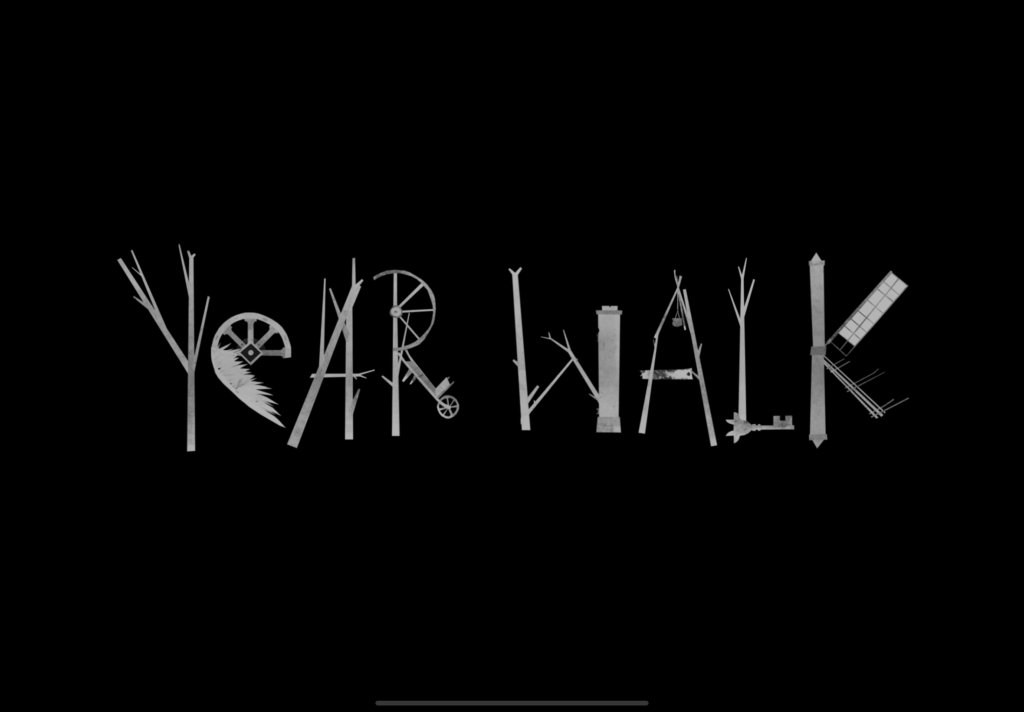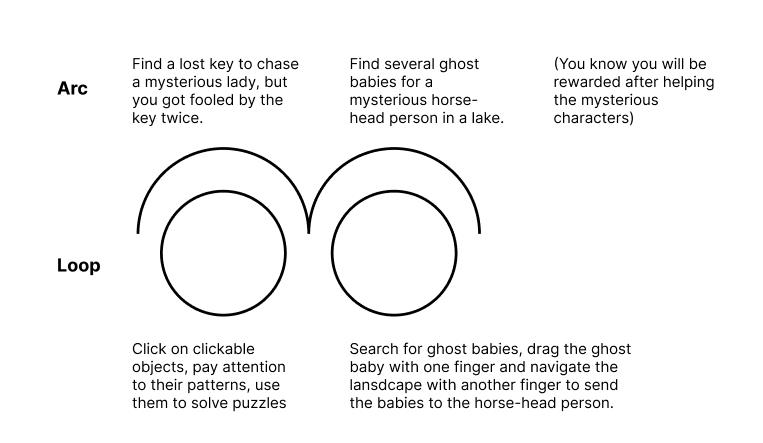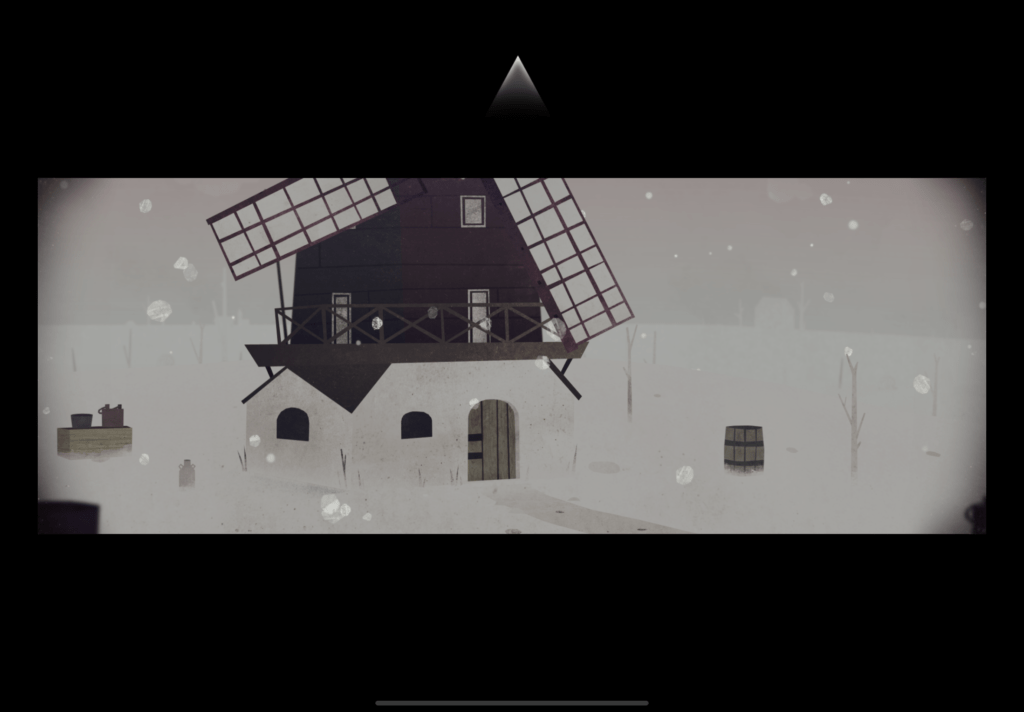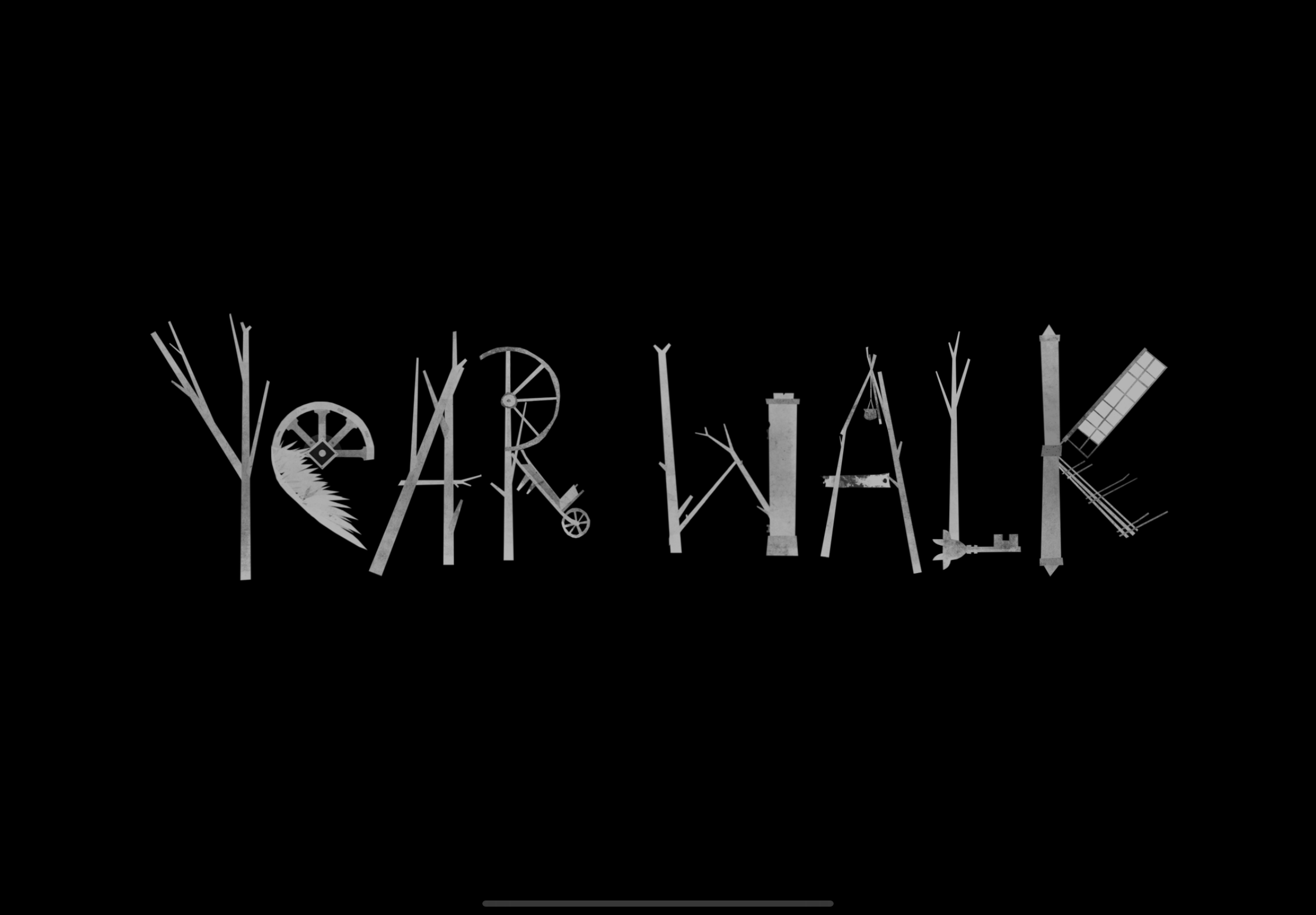
I played Year Walk, an iOS game developed and published by Simogo in 2013 and later launched on Steam in 2014. The game is based on an old Swedish practice of seeking a glimpse of the future through walking. The game contains heavy mystical and horror elements, including convoluted symbols and blood. Based on these characteristics, I think the target audience for this game is 16+ year-olds who either like horror or Swedish folklore.
Some important formal game elements are:
-players: player against game
-rules: scroll forward, backward, left, or right to explore different game scenes and interact with different objects. I think this game has a very unique rule for exploration and because of the scrolling function, players are expected to remember where different objects are in this game.
-resources: This game requires players to find and pay attention to different clues scattered around the environment. While playing the game, I found it important to write down important locations and clues, even though I did not understand what they meant and what they would be used for. Moreover, the game also has a companion app that teaches players about the different symbols used in the game, and it also contains a secret ending.
-outcomes: exploration. The only way to move forward with the plot in this game is to explore the landscape and interact with objects.
-objectives: solve puzzles
Types of fun: The main type of fun is discovery. You do not know who you are or where exactly you are when you first enter the game, and you need to find out more about yourself and the place you are year-walking through conversations with other people like your lover and even the journal which is included in the companion app. The second type of fun is sensation. The game’s art style, music, and eerie objects evoke a sense of horror. Moreover, there are some jump scares in this game that further strengthen the horror sensation among players.
Narrative and Loops & Arcs: The game uses embedded narrative and there is a sequence of arcs with expanded loops inside the arcs (see the picture below). For example, as players are first exploring the landscape, they will meet the protagonist’s lover who tells him not to go on a year walk because her brother died on a year walk. At this point, players familiarize themselves with the arrow signs that allow them to move forward, and backward and the horizontal scrolling gesture to move sideways. Players learn that if there is an arrow appearing at a certain location, that means they can follow the arrow to go to a new place. Then, players meet a mysterious lady and a horse-head person who gives them different puzzles. The architecture of the setting sets the whole mood of the game: the year walk is incredibly dangerous. The fact that players move around the landscape by clicking the arrows affords the jump-scare scenes and helps elevate the overall horror sensation in this game.

Arcs & Loops at the beginning of Year Walk

Players will meet the protagonist’s lover when they go inside this house by clicking the arrow.
Particular fail and improvement: I got stuck for a long time in one of the puzzles that rely entirely on audio. Players need to listen to a piece of music and determine which pitch matches the one in the music and there are 8 options! As someone not very good at music, I struggled to pass this puzzle. As a result, I had to search for how to do the puzzle and follow a YouTube video online. There were many other similar incidents where I felt frustration in this game, and I think my frustration comes from the fact that the game provides no hint or any form of support to help players understand how they can pass the puzzles and what they can do. Another example was that I had trouble finding one of the ghost babies and I had to search online about where to find it. I found out that to find the missing baby, I need to use two fingers to keep dragging the screen to the left and the baby is hiding at the very end of the scene. Unaware of this mechanism of using two fingers, I couldn’t figure out the puzzle by myself. Hence, in terms of game improvement, it would be nice to have a quick tutorial at the very beginning of the game to inform players what they can do and the specific uses of single-finger tapping and double-finger dragging.




